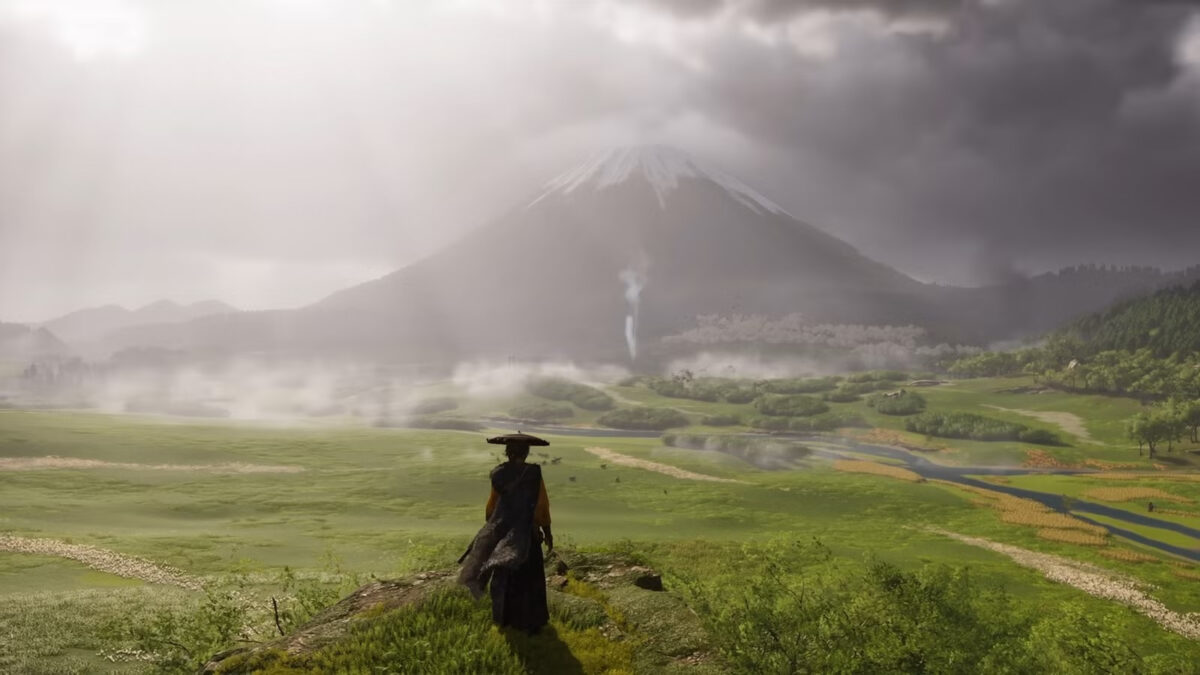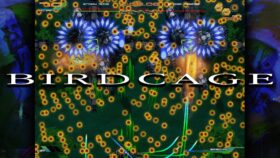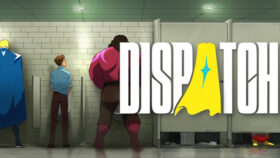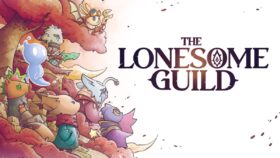In 2020, Ghost of Tsushima wasn’t just another hit game; it was a phenomenon. Sucker Punch Productions gave us the epic, open-world samurai adventure we had been waiting for, and it was a masterpiece of art, combat, and storytelling. The pressure for a sequel was enormous. Now, five years later, Ghost of Yotei has arrived exclusively for the PlayStation 5, a console it was built to push to its limits.
This isn’t just Ghost of Tsushima 2. The game immediately carves out its own identity by jumping 300 years into the future to the untamed northern frontier of Ezo—what we now call Hokkaido. We leave behind the noble Jin Sakai and step into the boots of Atsu, a female warrior, or onna-musha. Her mission isn’t to save a nation; it’s a raw, personal quest for revenge against the “Yōtei Six,” the six outlaws who murdered her family sixteen years ago. This setup instantly signals a darker, more intimate, and rage-fueled story.
This change in focus kicks off a sequel that is, in many ways, a stunning technical achievement and a masterclass in refining what already worked. It gives us one of the best new protagonists in years and deepens the combat that made the first game so satisfying. But by sticking so closely to the original’s open-world formula, it has created a deep divide. The result is a powerful game that is both a triumph and a source of debate—a near-perfect version of a design that is starting to feel tired.
Ghost of Yotei Review
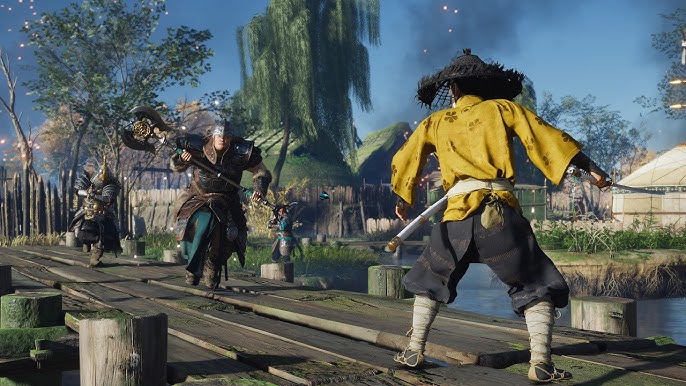
Ghost of Yotei‘s story is built on a simple and powerful idea. Right at the start, Atsu writes down her hit list, giving you a clear goal: hunt down and kill the six people who ruined her life. This structure gives the game a sharp focus that constantly pushes you forward. It’s a straightforward revenge quest, unlike Jin Sakai’s journey, which was a complex struggle between his samurai code and the brutal tactics he had to adopt to survive.
This clarity is both a strength and a weakness. The story is emotional and carried by a fantastic lead performance, but it’s not as thematically deep as Tsushima. Jin’s story asked big questions about honor, sacrifice, and the cost of war. Atsu’s story, while intense, is narrower. The plot is predictable but extremely well-told, filled with strong character moments and a real sense of anger. However, the story sometimes relies on the cheap trick of having your target escape at the last second just to stretch things out, which hurts the pacing.
To deepen the connection to Atsu’s loss, the game uses a brilliant flashback mechanic. In key locations, like the ruins of her childhood home, you can press a button to seamlessly transition to the past, playing as a young Atsu and experiencing the life that was stolen from her. It’s a powerful tool that’s woven perfectly into the game and does a great job of setting the stakes for her quest.
While the story’s complexity is debatable, Atsu is a fantastic protagonist and a major improvement over the more reserved Jin Sakai. Her design is strong and practical, with realistic armor that isn’t sexualized. She’s presented as capable and intimidating, a refreshing example of a strong female lead in a major game.
Atsu’s fiery, brash, and justifiably angry personality gives the story an intense emotional core that is more engaging than Jin’s quiet stoicism. This is all brought to life by a powerful voice performance from Erika Ishii. Her advanced skill set at the start of the game can feel questionable, as it undermines the sense of progression, but the story explains this well: she spent more than a decade as a mercenary, making her a hardened warrior from the moment you pick up the controller.
Ghost of Yotei Gameplay
The biggest gameplay change in Ghost of Yotei is the complete overhaul of the combat. The original game’s iconic four-stance system, where Jin switched fighting styles to counter different enemies, has been replaced with a full arsenal of weapons. Atsu can seamlessly switch between a traditional katana, fast dual swords, a long spear, a massive ōdachi, and the versatile kusarigama (a chained sickle). The “rock-paper-scissors” strategy is still there, as certain weapons work better against specific enemy types, but the feel is completely different.
This change perfectly reflects who Atsu is. Jin was a samurai, and his mastery of different stances with a single blade represented his discipline and honor. Atsu is a vengeful spirit and a pragmatic mercenary. She uses whatever tool gets the job done, even picking up weapons from fallen enemies. The gameplay brilliantly reinforces her character as a ruthless survivor.
The new system adds immense variety, making combat feel more dynamic and fun. The kusarigama, in particular, is a standout, allowing for awesome crowd control and even ranged stealth takedowns. However, physically swapping between entire weapons feels clunkier than the instant, graceful shift of stances, which can break the “flow” that made Tsushima‘s combat so special.
Despite this change, the core feel of the combat is still incredible. The action is fluid, the animations are perfect, and every parry and strike feels immensely satisfying. The cinematic standoffs and intense one-on-one duels are back and are still some of the most thrilling moments in gaming.
One thing is clear: Ghost of Yotei is a much harder game. On higher difficulties, enemies are more aggressive, parry windows are tighter, and bosses can be brutal. This increased difficulty is a welcome change for those seeking a challenge, but it can be a source of frustration for others who felt the first game had a better balance.
Beyond the blade, other systems have been expanded. Stealth is less of a focus; getting caught isn’t a big deal and usually just leads to an awesome fight. A great new feature is the wolf companion, who can help you in battle and even revive you if you go down. There’s also a new camping system where you can rest, cook food for temporary buffs, and craft ammo, adding a nice, immersive rhythm to exploration.
It is almost certain that these improved gameplay systems will make its way into the returning co-op Legends Mode, which arrives via a post-launch DLC in 2026.
Ghost of Yotei Map and Setting
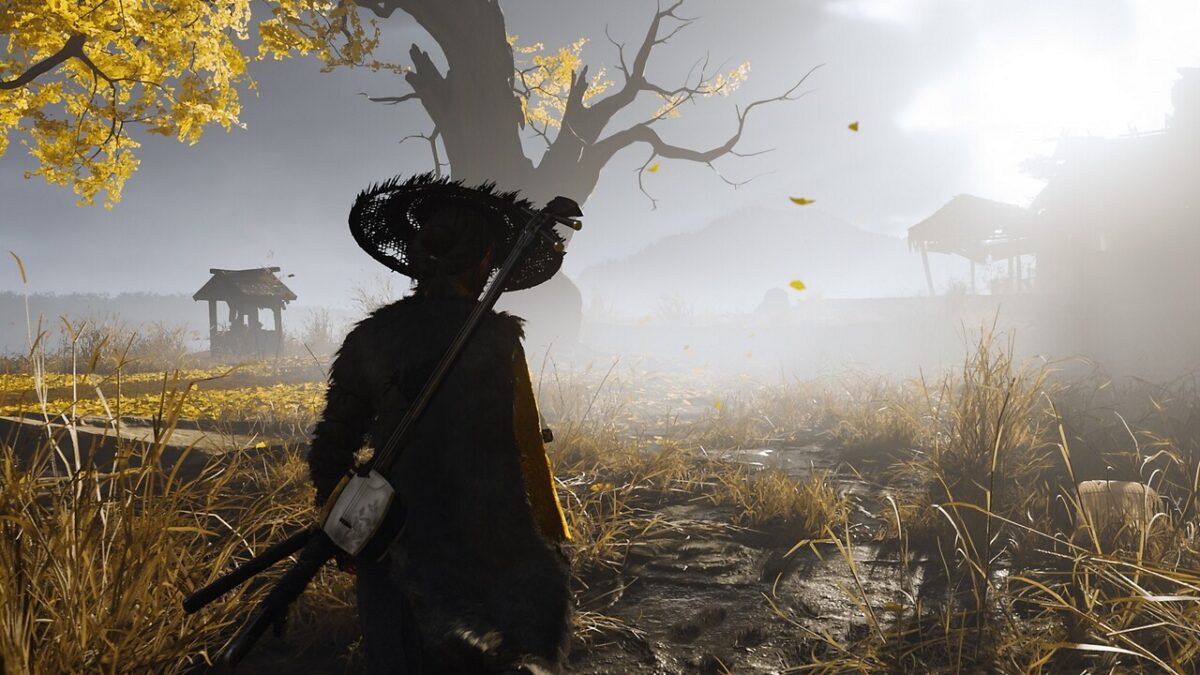
The visuals in Ghost of Yotei are, simply put, stunning. It’s a huge leap over the first game, which was already beautiful, and it takes full advantage of the PlayStation 5. The world of Ezo is rendered with incredible detail, from persistent snow that deforms as you walk through it to foliage you can actually cut down. The environments are more diverse, ranging from lush plains and dense forests to harsh, snow-covered mountains.
Sucker Punch also cleverly designed the map to feel bigger than it is. The world is split into six regions, and the way they are laid out, combined with the constant presence of landmarks like Mount Yotei on the horizon, creates a powerful illusion of a vast, epic landscape without feeling bloated or empty.
But beneath this beautiful surface lies the game’s most divisive issue: its open-world design. On one hand, Ghost of Yotei can feel like a massive, bloated, and formulaic game. The structure feels tired and repetitive, a map full of icons to clear, boring fetch quests, and a gameplay loop that can lead to burnout. The beautiful world can feel like just window dressing for a design that feels outdated compared to innovative titles like Elden Ring and The Legend of Zelda: Breath of the Wild.
On the other hand, the game is also a masterful refinement of the genre, and Sucker Punch’s day one patches have ensured the release was near-perfect on launch. The focus on organic discovery makes exploration feel rewarding, not like a chore. The side quests are more varied and interesting, often leading to meaningful rewards like new skills or armor. The Guiding Wind mechanic is back and is once again a brilliant, immersive way to navigate without a cluttered mini-map. This split reveals a real tension in the game’s design: its execution is near-perfect, but the underlying formula feels stale, craving a revolution that never comes.
A Tale of Two Cultures
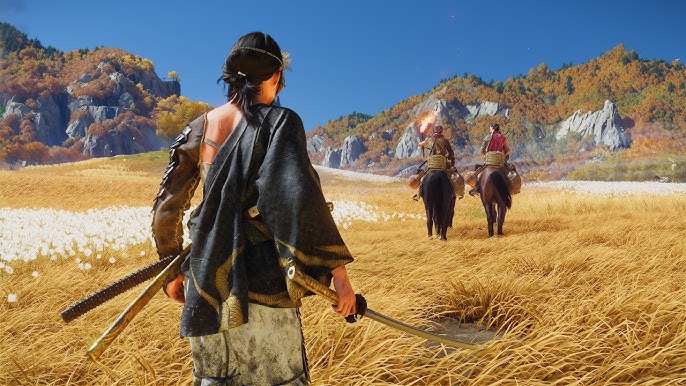
The game’s setting in 1603 Ezo brings it into contact with the indigenous Ainu people, a group with a distinct culture and a painful history of colonization by the Japanese government. This presented a delicate subject for a Western studio to tackle, with the risk of misrepresenting the Ainu or even erasing them from their own land in the story.
Sucker Punch seems to have taken these concerns seriously. They detailed their extensive research process, which included hiring an Ainu cultural advisor to consult on the depiction of Ainu towns, traditions, and beliefs. This collaboration even influenced gameplay; the team added foraging mechanics after learning about the Ainu’s deep, respectful relationship with nature. By being transparent about this process, the studio not only created a more authentic world but also showed an understanding that respectful representation is a key part of making a great game today.
Ghost of Yotei Final Thoughts
Ghost of Yotei is a game defined by a central tension: it is a product of exquisite execution but conservative innovation. It improves on its predecessor in almost every way—it’s more beautiful, its mechanics are deeper, and its hero is more memorable—but it steadfastly refuses to reinvent the formula that made the original a success.
The result is an incredible sequel and an essential experience for fans of the original and lovers of polished, open-world action. Its combat is a deep and brutal dance, its world is one of the most beautiful ever created, and in Atsu, it has a protagonist who will be remembered for years. However, it is not the revolutionary leap forward that some may have hoped for. It is the ultimate refinement of the Ghost of Tsushima experience, for better and for worse.
For players seeking more of what they loved, Ghost of Yotei is a masterpiece that delivers on every promise. For those who were already tired of the template, it is the most beautiful and well-crafted example of a game they no longer wish to play. It does not escape the shadow of its predecessor so much as it sharpens that shadow to a razor’s edge.
Pros & Cons
| Pros | Cons |
|---|---|
| A breathtakingly beautiful open world that sets a new benchmark for visual artistry and technical performance on the PlayStation 5. | The underlying open-world structure can feel formulaic and repetitive, risking burnout for players fatigued with the genre’s conventions. |
| Atsu is a fantastic new protagonist: compelling, well-written, and a welcome example of strong, non-sexualized female representation. | The narrative, while emotionally resonant and well-executed, is more predictable and lacks the thematic complexity of its predecessor. |
| The core combat remains exceptionally fluid and satisfying, with brutal, cinematic duels that are a consistent highlight. | The switch from combat stances to a multi-weapon system can feel less fluid for some players, disrupting the elegant flow of the original’s combat. |
| The expanded arsenal of weapons and new combat mechanics add significant tactical variety and depth to encounters. | A significant increase in difficulty may alienate players who preferred the more balanced challenge of Ghost of Tsushima. |
| For those who enjoy the formula, the game offers a more organic and rewarding approach to exploration and side content. |
